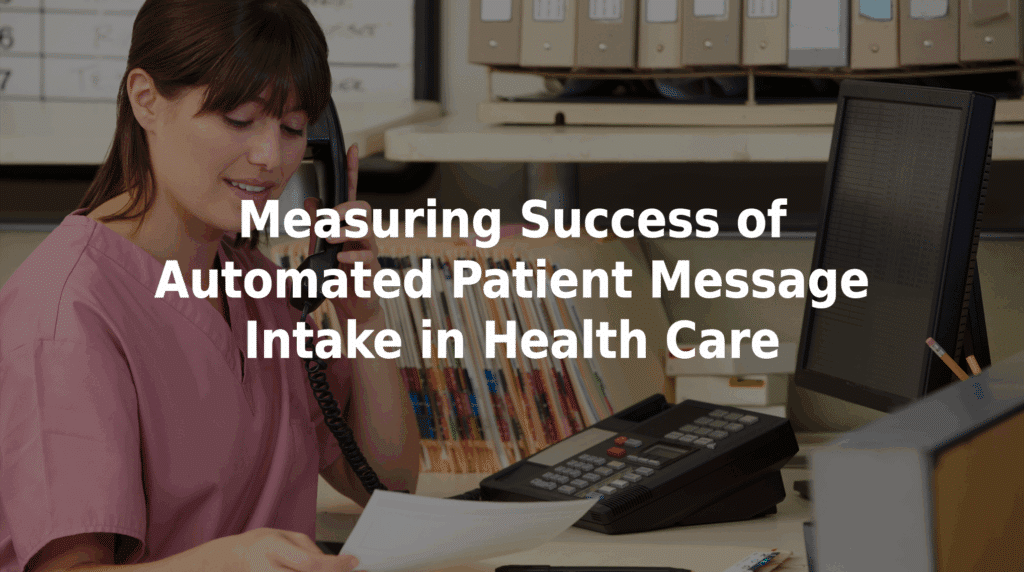Measuring Success of Automated Patient Message Intake in Health Care
Adopting automated intake can transform how medical organizations handle their communication, reduce their administrative burdens, and improve care delivery. But how do you know that your investment is working? For patient access managers, measuring success of automated patient message intake in health care comes down to operational improvements, benefits for support staff, and patient satisfaction.
Why Success Metrics Matter for Intake Automation
Automation may give the feeling that work is easier, but it’s also important that you have a means of measuring its effectiveness. Without tracking key performance indicators, healthcare teams may:
- Overlook workflow inefficiencies.
- Miss opportunities to refine their processes.
- Struggle to demonstrate an actual return on investment.
- Fail to achieve long-term use of the automation in question.
KPIs to Evaluate Intake Automation Success
1. Reduction in Call Center Hold Times
Effective automation decreases the volume of calls that nonclinical operators must handle. This allows them to focus on more complex patient concerns — whether from a medical call center or the front desk of a practice.
2. Message Accuracy and Completeness
Automated intake can guide patient callers on how to self-report their symptoms, reducing incomplete or vague messages that require nurses to follow up.
3. Patient Follow-Up Call Volume
Fewer repeat calls (either from patients to nurses or nurses to patients) indicate that concerns are addressed accurately and efficiently when they’re first reported.
4. Clinical Response Time Improvements
Using structured, complete intake data, nurses and providers can triage and respond to patient concerns far more quickly.
5. Staff Satisfaction and Workload Reduction
Fewer errors and cleaner workflows will lead to improved staff morale and reduced burnout.
6. Patient Satisfaction Scores
Survey feedback will offer direct insight into whether patients feel heard, supported, and satisfied with your intake and practice communication.
Best Practices for Measuring Success
- Establish Baseline Metrics: Before you implement automated intake, establish your current call volumes, response times, message accuracy, and satisfaction levels.
- Use Real-Time Dashboards and Reports: Monitor performance continuously and adjust workflows as needed.
- Collect Feedback From Patients and Staff: Surveys and interviews provide qualitative insights into your automated intake’s effectiveness.
- Benchmark Against Industry Standards: Compare results to peer organizations or national averages where possible.
- Refine Workflows Based on Data: Use results to identify potential bottlenecks and enhance system configuration.
How MedMessage Automate Supports Measurable Success
TriageLogic’s MedMessage Automate gives healthcare organizations the means to track and improve automated intake.
Key benefits include:
- Structured, AI-driven intake to reduce errors and follow-ups.
- Real-time analytics to monitor message quality and response times.
- Scalable workflows to support high-volume environments.
- Full compliance with HIPAA requirements.
- Integration with existing systems and EHRs to enhance efficiency.
- Transparent reporting to demonstrate ROI and operational gains.
Make Intake Automation a Measurable Success in Your Organization
Discover how structured reporting, improved accuracy, and better patient communication drive meaningful results. Contact us today to learn more about our MedMessage Automate solution, and schedule a free demo!

